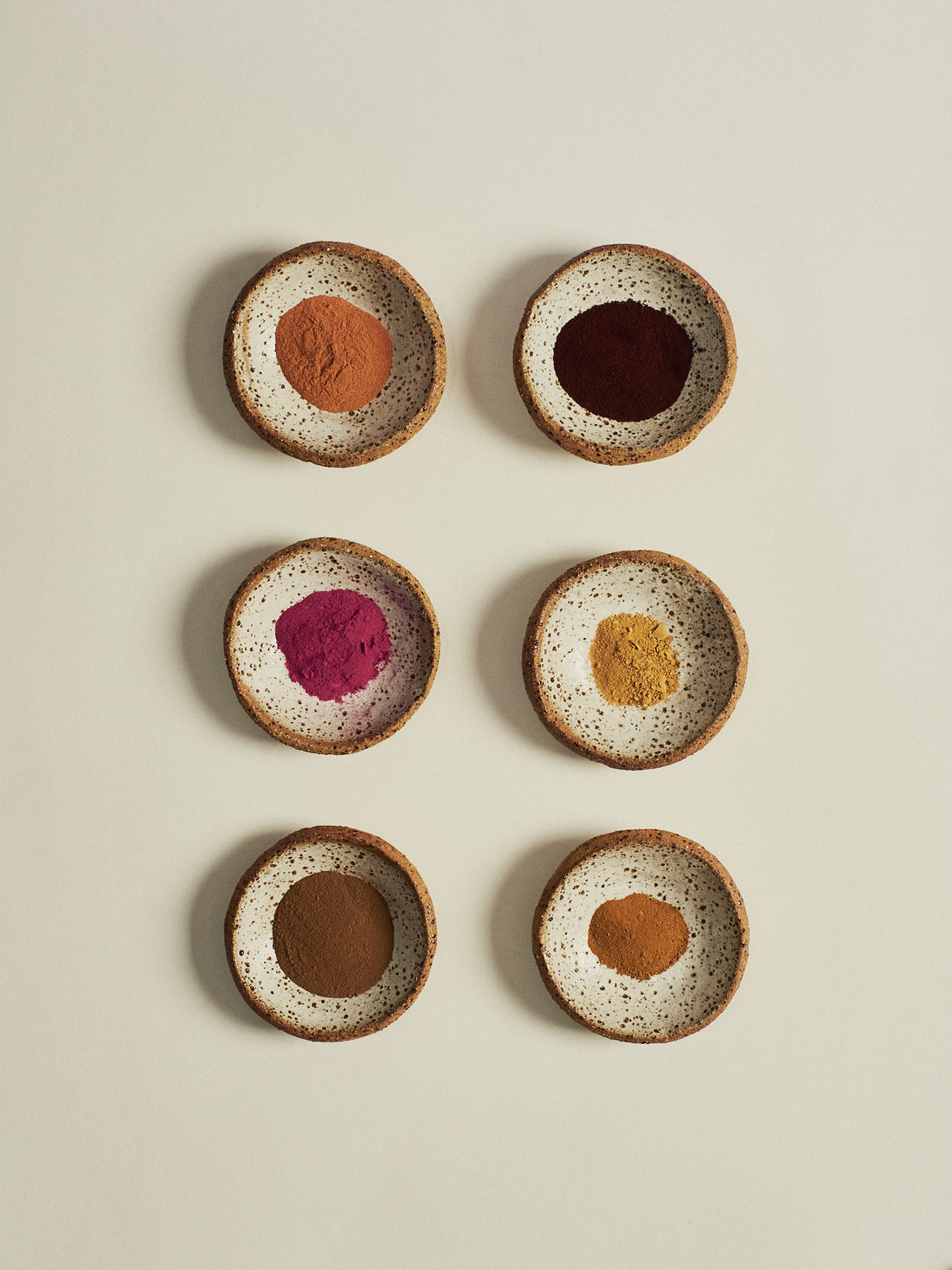
How to Make Paint with Earth Pigments
Share
How to Make Paint with Earth Pigments
By blending earth pigments with your chosen binder, you can easily make your own archival quality paint using sustainable and non-toxic ingredients. Here’s a step-by-step guide on how to make your own basic paint using natural colours.
What Are Earth Pigments?
Earth pigments are natural colorants derived from the earth, such as clay, minerals, and ochres. These pigments have been used for centuries in art and architecture. They are non-toxic, eco-friendly, and provide excellent lightfastness.
Materials Needed
- Earth Pigments: You can purchase these from a store or forage for your own.
- Binder: You can use gum arabic (for watercolours), egg yolk (for egg tempera), or an oil like walnut or linseed.
- Mortar and Pestle or Grinder: To crush the pigments. Only necessary if you are collecting your own pigments. Store-bought pigments are already ground into a find powder ready for mixing.
- Palette or Mixing Surface: For blending colours. If you don’t have a glass palette and muller, you can just use a plate and palette knife.
- Containers: For storing your finished paint. Watercolour pans, aluminium paint tubes or plastic containers.
Step-by-Step Instructions
- Gather Your Pigments
Start by collecting your earth pigments. You can find them at art supply stores, online, or even by sourcing natural materials from your surroundings (make sure they are safe and non-toxic). Common earth pigments include:
- Yellow ochre
- Red ochre
- Raw sienna
- Burnt umber
Other materials you can use include:
- Charcoal
- Lake pigments (pigment made from dye)
- Egg shells
- Prepare the Pigments
Using a mortar and pestle or grinder, crush your chosen pigments into a fine powder. The finer the pigment, the smoother your paint will be. Be patient, as this may take some time. If you have purchased your pigments, they will already be ground into a fine powder.
- Mix the Pigment with a Binder
The binder is what will hold your pigment together and help it adhere to your painting surface. Add the pigment to the mixing surface (plate or palette) and make a small well with the tip of your finger. Add a few drops of your binder (you can always add more) and begin mixing with your palette knife or glass muller. If the consistency is too thin, add more pigment. If the consistency is too thick, add more binder.
- Store Your Paint
Once you’re satisfied with your paint, transfer it into airtight containers. Aluminium tubes are best for oil paint. Watercolour pans are best for watercolours. Egg tempera paint should be used immediately or within 3 days stored in an airtight container in the fridge. Label them with the colour and date for future reference.
Shop Natural Watercolour Kit here.

